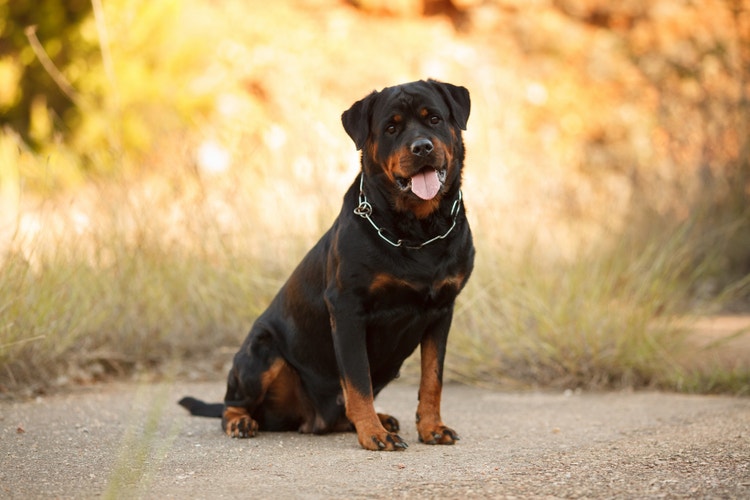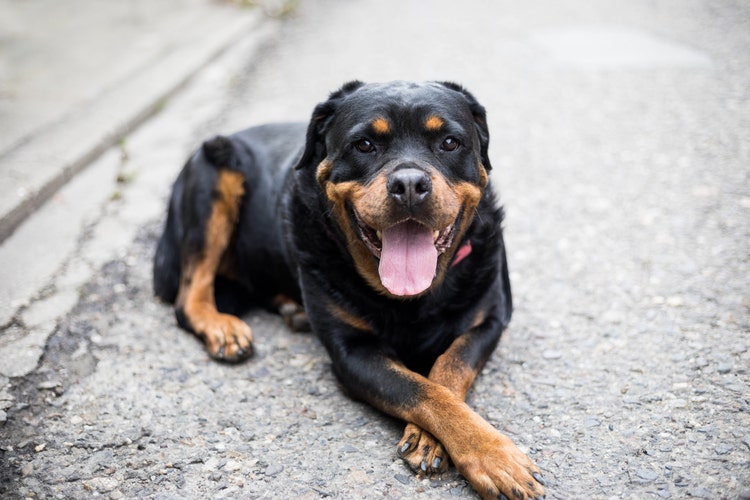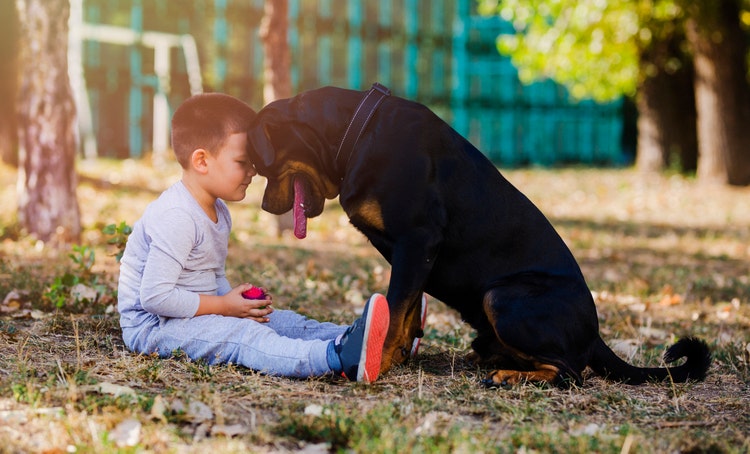
Rottweiler


Where Are Rottweilers From?
The Rottweiler’s true origin is unknown, but they are likely descendants of ancient Roman herding dogs. They were used to herd cattle with the Roman troops during their travels through Europe. In approximately 74 AD, one of the tours ended in present day southern Germany. For the next two hundred years, their descendants stayed in this area, acting as guard dogs.
When a church was being constructed on the site of an ancient Roman bath house around the year 700, the builders found red roof tiles from Roman villas. These tiles, das Rote Wil, became the derivation of the current site name, Rottweil, and the origin of this breed’s moniker.
This breed’s numbers steadily declined in the mid to late 19th century, when cattle driving was outlawed and railroads became more prevalent. They did not regain their popularity until the early 20th century, when they garnered acclaim as police dogs.
The Allgemeiner Deutscher Rottweiler Klub (ADRK) was created in 1921, and remains active today. The breed was accepted by the AKC in 1935.
Caring for a Rottweiler
What Kind of Diet Do Rottweilers Need?
What Kind of Diet Do Rottweilers Need?
Rotties tend towards obesity, so careful calorie intake is a must. They are very food motivated, so training with treats works well, but keep snacking to a minimum. They are also prone to gastric dilatation volvulus (GDV or bloat), so it may be best to feed smaller, more frequent meals, and to avoid exercise after eating.
How Much Grooming Does a Rottweiler Need?
How Much Grooming Does a Rottweiler Need?
Rottweilers require only moderate grooming. Brushing your Rottie few times weekly and regular bathing is enough to keep their coat healthy. Seasonal shedding will necessitate additional brushing, and be prepared for tumbleweeds!
Are Rottweilers Healthy Dogs?
Are Rottweilers Healthy Dogs?
Rotties are predisposed to: gastric dilatation volvulus (GDV or bloat), osteochondrosis, hip dysplasia, osteosarcoma, diabetes, entropion, cataracts, progressive retinal atrophy (PRA), and retinal detachment.
They’re also prone to kidney failure, elbow dysplasia, aortic stenosis, and atlantoaxial subluxation as well, but these are less common.
Can You Train a Rottweiler?
Can You Train a Rottweiler?
Rottweilers are bright dogs, but need training to develop good habits. Puppy training classes are a must if you want to raise a well-behaved adult. This breed is generally eager to please, but can also be stubborn if the mood strikes. Rough play is discouraged, as this may lead to aggression.
How Much Exercise Does a Rottweiler Need?
How Much Exercise Does a Rottweiler Need?
Rotties need to expend energy daily. They are very athletic, and enjoy any number of activities, especially if their families participate. They also excel at cart pulling and other working duties, such as herding and tracking.

Are You Ready to Adopt a Rottweiler?
To adopt a Rottweiler, start by making sure a dog of this size and demeanor will fit your lifestyle. Use our pet adoption checklist to walk through each step in the adoption process. Complete the necessary adoption applications and be prepared for interviews or home visits. Spend time with potential dogs to find a good match. Finally, prepare your home for the new pet, ensuring it's safe and welcoming.

Pet Insurance Options for Rottweilers
Pet insurance for a Doberman Pinschers may help cover costs for conditions like bloat and hip and elbow dysplasia. Consider a policy that includes hereditary and congenital conditions, flexible coverage options, and reasonable premiums.
Use our insurance aggregator tool to compare providers and find the best plan for your dog's unique needs.
What Are Physical Characteristics of a Rottweiler?
Rottweiler Facts
Other Breeds to Explore
References
- American Kennel Club. The Complete Dog Book. Random House Digital, Inc., 2006.
- Morris, Desmond. Dogs: The Ultimate Dictionary of Over 1,000 Dog Breeds. Trafalgar Square, 2002.
- Wilcox, Bonnie and Chris Walkowicz. The Atlas of Dog Breeds of the World. T.F.H. Publications, Inc., 1995.


